We’ve just had a brief respite between preview seasons, and so I’ve had time to take stock of what’s been working well for me in Commander recently. This week, I’ve decided to check in on my Aurelia, the Warleader deck. There have been many solid red and white cards printed over the past 6 months or so — which ones are performing, and which classics continue to impress?
Aurelia, the Warleader
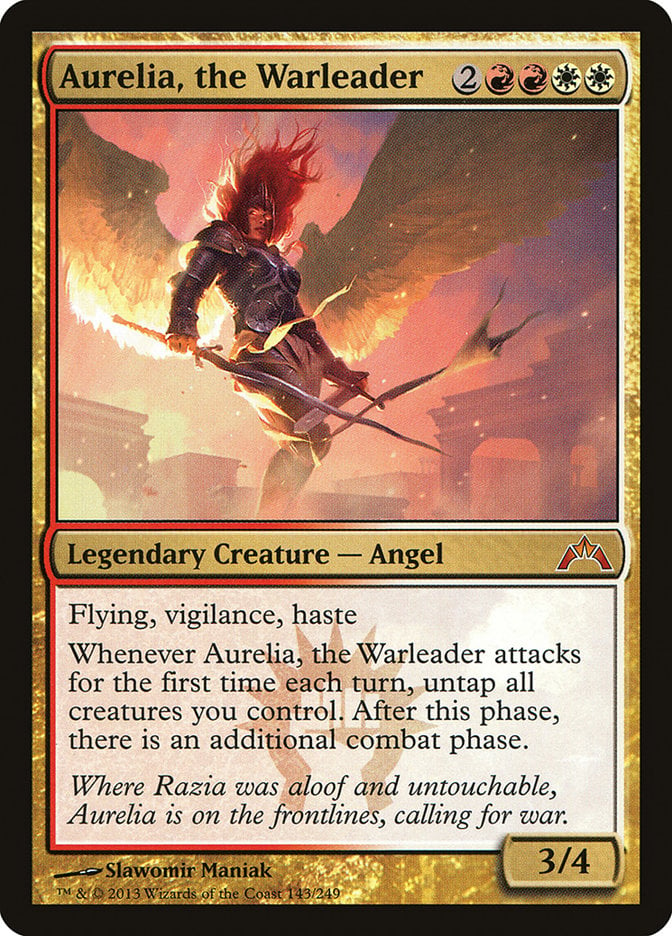
Before I get into my report of sorts, I’d just like to point out that Aurelia continues to be one of the more popular Boros commanders precisely because of her versatility. She commands many kinds of decks well, from Extra Combats, to Voltron, to tribal Angels.
My deck is a more controlling build of Aurelia that seeks to spend time setting up before turning the corner quickly to eliminate players in the mid-to-late game. It also packs a lot of reanimator cards to keep up the pressure once we shift gear. I really like where it’s at, but there are also some obvious cards I’m not playing.

Two such cards are combo cards you’ll find in many Aurelia decks: Helm of the Host and Sword of Hearth and Home. While they are both amazing for Aurelia, they’re not cards I particularly enjoy playing. They end games out of nowhere, and my usual playgroups are a touch too casual for that sort of combo.
New Overperformers
Reidane, God of the Worthy

The first card I’d like to highlight is Reidane. I’ve sung her praises before, but she really has continued to impress. She wears Equipment like a champ, and she does a surprising amount to help you gain extra value. Delaying board wipes or powerful artifact or enchantment engine cards by up to two turns is secretly her best attribute, and when combined with Aura of Silence, she can help me buy time to set up. She also eats early removal, which helps ensure Aurelia or another threat (like Etali, Primal Storm) can stick.
Valkmira is something I’ve played with a lot less, but I’ve been trying it more often recently. Shaving off damage from incoming attacks can be surprisingly relevant, and I think this mode comes in handy more often than the removal tax.
Archaeomancer’s Map

Archaeomancer’s Map is a new white staple; it’s going to be as popular as Smothering Tithe, I guarantee it. What I love about it is that it does just enough to be worth casting, but it’s not scary enough to be removed. In Aurelia, it helps us skip a turn ahead in order to unlock our six-drops or provide enough mana for interaction. It also fast-forwards Emeria, the Sky Ruin, getting the reanimation online ahead of schedule. I’ve been using my Enlightened Tutor to find this card, which tells you all you need to know about how good it is.
Blacksmith’s Skill

Blacksmith’s Skill is an incredible little card. Being able to grant both indestructible and hexproof for one mana is such a leap above the Faith’s Shield I was already running, and it’s already come in handy many times. Protecting Smothering Tithe, Lightning Greaves, or Sunforger, while also protecting our best creatures? A definitive overperformer.
The best interaction I’ve had recently: granting hexproof to an opponent’s Swiftfoot Boots that I’d cast off of Etali when they tried to bounce the Boots back to their hand.
Sejiri Shelter

Sejiri Shelter makes up for the protection effect we’ve lost from cutting Faith’s Shield, giving us the occasional unblockable utility we’d otherwise lose. I used this mode recently to push through damage to a player I couldn’t ordinarily attack past, and it’s an underrated application of the card. I’ve always wanted to run more than one single-target protection spell in my Aurelia deck, and getting to slide one into the mana base finally makes that possible.
Valakut Awakening
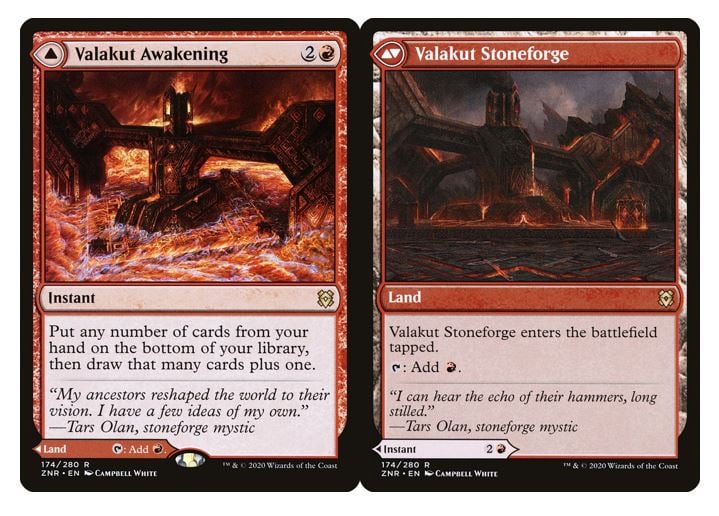
Speaking of slotting extra value into the mana base, Valakut Awakening is another solid performer. It’s easy to say these sorts of cards should be auto-includes in their relevant colored decks, but here’s some anecdotal evidence for you. More than once recently, I’ve filed away a handful of lands — either from Land Tax, or from drawing badly — and exchanged them for a handful of game-winning cards.
Jeska’s Will

Jeska’s Will is probably an overcorrection when it comes to printing good red cards, and it’s one that will continue to see extensive Commander play. Truthfully, I’ve avoided impulse draw in Aurelia for as long as possible. She’s a deck that enjoys Sunforger, and toolbox answers are only good if you have them in the deck. While we can reuse them with Mistveil Plains, there’s no way to get Boros Charm back from exile.
Jeska’s Will is strong enough for me to abandon that rule. It helps me recast Aurelia, or set up a really big turn. Treasure has become an increasingly terrifying prospect due the ability to save ahead for big turns, and Jeska’s Will joins Mana Geyser in this deck as a way to access that explosive potential.
Moraug, Fury of Akoum

Moraug is a card I’ve rarely had the chance to cast, but when I have? It’s ended games in short order. Having access to Myriad Landscape and two fetch lands helps me access more combats than I have any right to enjoy. Even Field of Ruin is a deliberate choice, because it can help trigger Moraug — especially if I also have Archaeomancer’s Map in play. Moraug and Aurelia are best buddies — just make sure you run enough land synergy to reliably get more than one extra-extra combat.
War Room
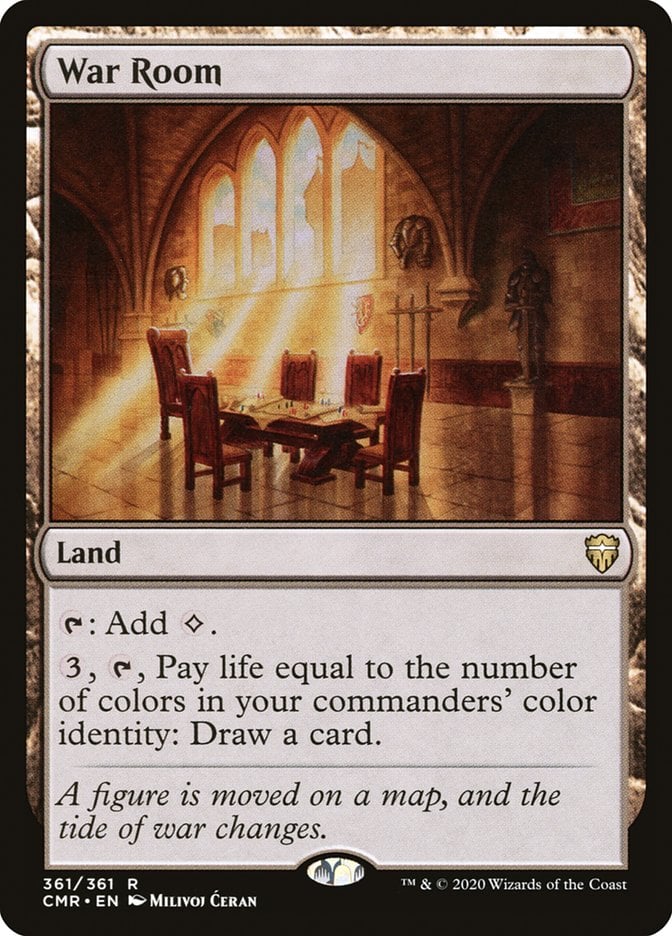
Rounding things out, War Room continues to impress. Aurelia’s one weakness is hitting clumps of interaction and lands. Though I run a good 24 creatures, there’s a great many cards that are unimpressive without creatures to back them up. War Room helps fix that problem, and it gets even better with Sword of Feast and Famine.
Old Classics, Better with Age
Sunforger
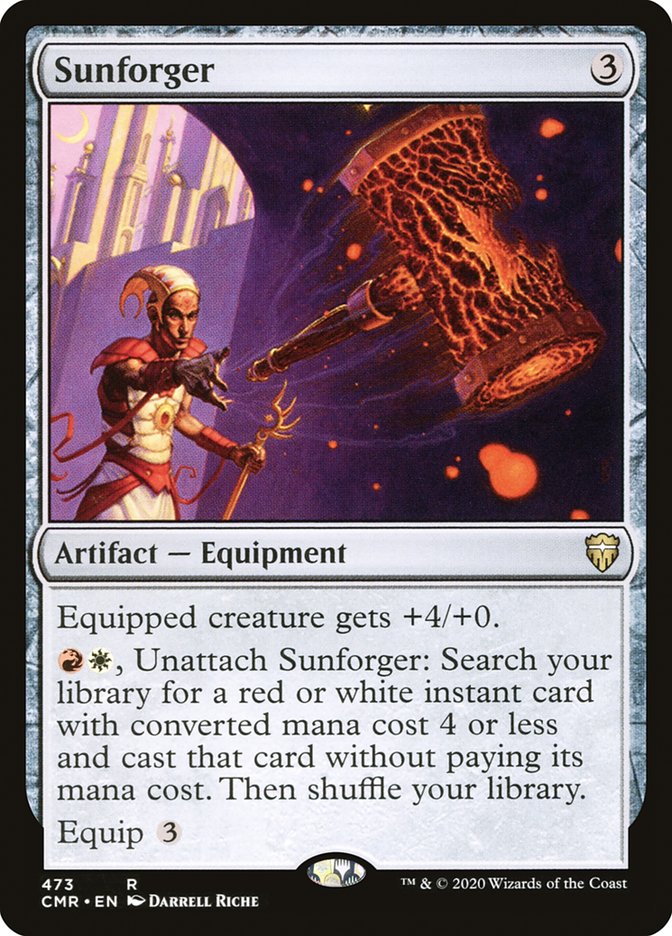
I’ve mentioned Sunforger a few times already, and it’s a card that gets better with every new instant and sorcery printed. Though it doesn’t allow us to cast Rip Apart (so close!), our MDFC lands have provided extra targets. I recently found myself in a position where using Sunforger to save my unimpressive board wasn’t worth it, so I fired it off to cast Valakut Awakening to redraw my hand instead. It felt great.
Dire Fleet Daredevil

I genuinely want to include this card in every red deck I brew. Whether it’s copying a ramp spell, removal, or something way spicier, you’re sure to get a lot of value from “Snatchcaster Mage”. Recently, I’ve used this card to reuse opponent’s removal spells, but it’s also got a niche use as graveyard hate against certain decks wanting to keep their own spells coming back.
When it overperforms, though, it really shines. It helped me win a game last week by recasting an opponent’s Mana Geyser, giving me the chance to take a bigger turn than anyone had calculated for, including recasting Aurelia.
Urabrask the Hidden

Urabrask is my favorite Praetor, and since Jin-Gitaxias and Vorinclex are bound by the shackles of the social contract, you might well agree. The tempo swing from Urabrask is always best experienced rather than explained, but in short — it can help you feel like you’re an entire turn ahead. The haste on your board, and removing new blockers from opponents’? Beautiful. This card has probably won me more games than any other card on the list today.
Catastrophe
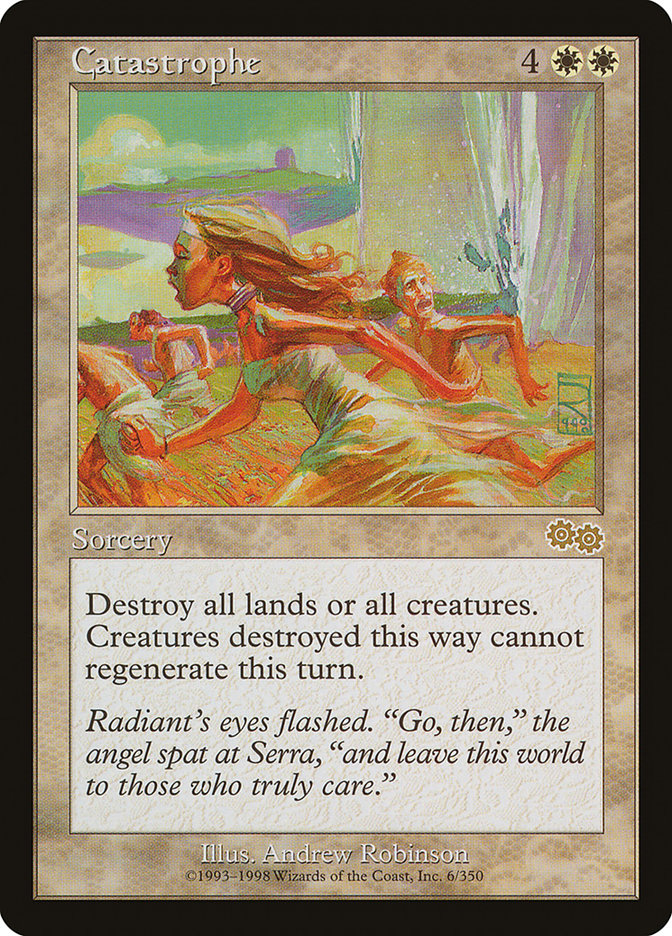
Catastrophe is the best way to use mass land destruction to win a game, if you ask me. What I love most about it is that it can be cast as Wrath of God 100% of the time, and you’re never in a position where you have to sit and wonder if it’s correct to destroy all lands. If you’re in that position, you know it’s correct. Best served with Boros Charm, Avacyn, Angel of Hope, or Teferi’s Protection, Catastrophe is preemptive protection for a game-winning board. Just don’t be a jerk.
The Jury is Still Out
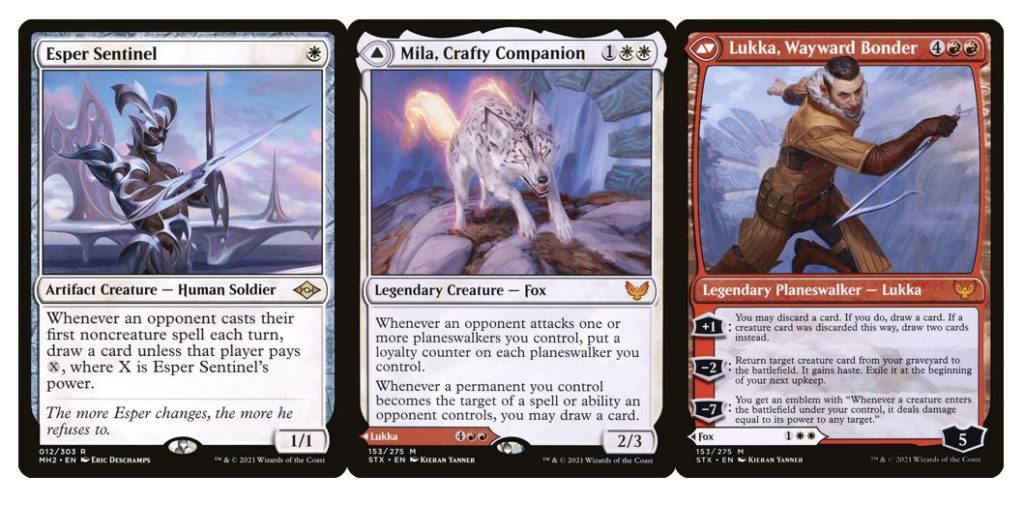
There are a couple additional cards I’m still undecided on. Currently, I’ve been swapping between Esper Sentinel and Mila, Crafty Companion, and I’m really unsure which is better for Aurelia. In a vacuum, Esper Sentinel might well be the better card, but I’ve noticed a sharp increase in people paying for it in the short time it’s been at tables.
Once we’re set up, we don’t often need to draw cards consistently, and Mila can offer enough draw that we’re happier to take the beefier body and other value. So far, I’ve used Mila’s ability to keep a Nahiri and an Ugin in play in separate games, and I’d be lying if I said that hadn’t helped me win. There’s also the utility in having access to Lukka in a reanimator build, but I haven’t been in a position where it’s been relevant yet. I’m leaning toward Mila, but the jury’s out.

Ah, Iroas. Iroas has been in the deck for a long time, and he’s done a lot of heavy lifting. One reason I love to play Iroas is that he’s incredibly easy to turn on in Aurelia; they can provide six of the seven devotion I need all on their own.
I’ve also forgotten the combat step damage protection way too many times to count.
Iroas might be the next cut from the deck, though. I’m not struggling to win games without him, so I have to ask whether it’s worth it to keep him around. My only caveat right now is that I’d have to be replacing him with a creature for sure, as I don’t want to go below 24.
***
I hope you enjoyed this check-in today. It’s useful to think about your decks from time to time, and more useful still to remember lines of play and evaluate them down the line. It can really help you to make cuts in future, and figure out what’s missing from the deck.
Aurelia is one my favorite decks to pilot, and I’m excited to see what’s next for her. Let me know on Twitter what red and white spells have impressed you lately.

Kristen is Card Kingdom’s Head Writer, and member of the Commander Advisory Group. Formerly a competitive Pokémon TCG grinder, she has been playing Magic since Shadows Over Innistrad, which in her opinion, was a great set to start with. When she’s not taking names with Equipment and Aggro strategies in Commander, she loves to play any form of Limited.

